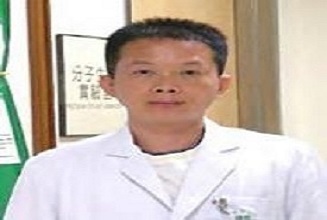Scientific Program
Keynote Session:
Oral Session 1:
- Cancer | Cancer Diagnosis | Cancer Therapy | Clinical Trials on Cancer
Title: What can we do in patients with palliative care that can improve their quality of life or even cure them?
Biography:
Huang Wei Ling, born in Taiwan, raised and graduated in medicine in Brazil, specialist in infectious and parasitic diseases, a General Practitioner and Parenteral and Enteral Medical Nutrition Therapist. Once in charge of the Hospital Infection Control Service of the City of Franca’s General Hospital, she was responsible for the control of all prescribed antimicrobial medication and received an award for the best paper presented at the Brazilian Hospital Infection Control Congress in 1998. Since 1997, she works with the approach and treatment of all chronic diseases in a holistic way, with treatment guided through the teachings of Traditional Chinese Medicine and Hippocrates. Researcher in the University of São Paulo, in the Ophthalmology department from 2012 to 2013.Author of the theory Constitutional Homeopathy of the Five Elements Based on Traditional Chinese Medicine. Author of more than 60 publications about treatment of variety of diseases rebalancing the internal energy using Hippocrates thoughts.
Abstract:
Statement of the Problem:
Palliative care is a relative new specialty recognized by some countries and aims to provide cancer´s patients end of care. And it is defined by the World Health Organization as the care of patients that are with life-threatening illness, with early detection and preventing measurements to reduce their morbidity and mortality. According to traditional Chinese medicine, cancer came from energy deficiency and Heat retention. And through the author’s studies, chronic patients have energies deficiencies in the chakras’ energy centers (diabetes, hypertension, myocardial infarction, cancer, etc).
Purpose:
To demonstrate that patient in palliative care has energy imbalances in the root level (energy imbalances) and the treatment of all this disharmonies and deficiencies are important to recover from their diseases, even cancer patients.
Methods:
Through 4 cases reports of cancer patients (thyroid, pap smear grade IV, breast cancer, prostate cancer, Lung cancer), all of them with chakras ´energies deficient in energy. The treatment using Chinese dietary counseling, auricular acupuncture with apex ear bloodletting and homeopathies medications according to the theory Constitutional Homeopathy of the Five Elements Based on Traditional Chinese Medicine were used.
Results:
All patients improved their quality of life treating their energy deficiencies and the first two patients cured from their cancer diseases only using this kind of approach.
Conclusion:
The conclusion of this study is that patients with cancer and all chronic disease have energy deficiencies in the chakras’ energy centers and the treatment using Chinese dietary counseling, auricular acupuncture with apex ear bloodletting and replenishing the chakras’ energy centers with homeopathies medications according to the theory Constitutional Homeopathy of the Five Elements Based on Traditional Chinese Medicine are very important to treat the root of all the problems of these patients and not just treating the symptoms.
Title: Tumor signal transduction-liquid biopsy detecting cancer therapy resistance in real-time
Biography:
Ming-Chung Jiang is a Medical Researcher, Taipei Medical University Hospital, Taipei, Taiwan studied in College of Medicine, National Taiwan University. He has won the key performances in Gold Award, Taipei International Invention and competition, 2014. Silver Award, the National Invention Award, Taiwan, 2016. Innovation Awards, 2019 TechConnectWorld Innovation Conference, USA
Abstract:
The Problems:
Solutions:
Core Technology:
Conclusion:
Title: Bioactive peptide-drug conjugates and liposomial anticancer drug delivery in neuro-endocrine tumors (NETs): neurotensin and the (NT/NTSR) receptor system
Biography:
Damion Crocamo is a student union leader in University of Naples Federico II.
Abstract:
The main focus of this current Experimental Thesis Project is the introduction of the native form of the bioactive tridecapeptide Neurotensin (NT) and its biomimetic chemically modified derived forms – obtained by specific biochemical protection strategies and specific functionalisation reactions , both feasible on the functional groups of the (NT) unique aminoacid sequence – and the (NT/NTSR) neurotensin receptor system in signal transduction of pathophysiological conditions , such as cancer and neurodegenerative diseases . The main goal of this preliminary Experimental Thesis Project is to study and to describe the role and functions of both (NT) and the (NT/NTSR) receptor system in GPCRmediated signalling biochemical pathways , in both physiological conditions and – most importantly - in pathology-related conditions , such as most importantly cancer and also neurodegenerative diseases , as major leading causes of death in global modern society. As a matter of fact , molecular targeted combined therapy and innovative biochemical techniques useful in Drug Delivery strategies of traditionally already well-known and recent newly discovered anticancer therapeutic agents in new formulations are key factors in current pre-Approval decision-making procedures in Clinical Oncology Phase Trials prior to final FDA-EMA Approval ( and subsequent marketing strategies ) . In molecular targeted combined therapy , the really essential key factor is the chemical conjugation of a well-defined biochemical sequence of naturally available and chemicallyprotected and functionalised aminoacids (in this case , Peptide-Drug Conjugates or Monoclonal Antibody-Drug Conjugates ) are thus finally obtained as potential therapeutic and theranostic imaging agents in innovative chemotherapy protocols. A wide range of many scientfic published results are mainly focused on ADC Targeted Therapies , but this Experimental Thesis Project is majorly oriented towards bioactive Peptide-Drug Conjugates and their related Liposomial Drug Delivery formulations and innovative drug delivery strategies . In fact . Liposomes are micellar nanoparticles capable of loading , encapsulating and delivering – in this Experimental Research article - the different (NT)-conjugated anticancer therapeutic agents in situ within cancer cells with an extremely unique biomolecular interaction ranging from site-specific recognition of DNA consensus sequences (i.e. GAG base triplets,etc…) to enzymes (for example , DNA TopoIsomerase II and several multi-kinase isoforms, etc…) , receptors (e.g. NT/NTSR receptor system – all overexpressed in cancer cells , especially in NETs cancer cell lines selected for this Experimental Thesis Assignment Project. The main resulting biochemical and pharmacological results obtained by application of such Nanotechnological Methods in final API Formulation and – more specifically – of the Liposomial Drug Delivery of Anticancer therapeutic agents are hereby listed as follows :
ï‚· induction of anti-mitotic and pro-apoptotic signal transdiction in biochemical pathwways of cancer cells ;
ï‚· highly evident in vivo cytotoxicity of formulated Liposomial anticancer drugs on several cancer cell lines ;
ï‚· cell cycle arrest and cell cycle inhibiton in cancer cells ;
ï‚· further consequent blockade of uncontrollled cancer cell proliferation , cancer tissue growth ;
ï‚· finally, reduction of tumor angiogenesis and of tumor invasiveness .
The main clinical purpose of these innovative chemotherapy protocols are to overcome anticancer drug MDR- efflux related cancer surivival , overall 1st Line Classical chemotherapy resistance due to uncontrolled cancer growth, progression and survival ; and finally , clinical relapse in refractory cancer disease possible in both experimental animal models and in humans . Furthermore , in this ongoing Experimental Thesis Project , the main attention is to be essentially focused on bioactive Peptide-Drug Delivery Conjugates and to novel formulation strateigies in Liposomial Anticancer Drug Delivery for the treatment od Neuroendocrine Tumors , mainly well-known as NETs. The prevalent overexpression of neurotensin receptor (NTR) in several human tumors (including a wide range of NeuroEndocrine Tumors from Ovarian Cancer , Breast Cancer ,Lung cancer and Pancreas and Prostate Cancers to Adenocarcinomas ,GI-Tract Tumors and fast-paced aggressive but slowly progressive Brain Cancers such as GEP-NETs) makes it an attractive target for the delivery of different classes of several traditional and novel anticancer cytotoxic drugs , such as :
* Liposomial Doxorubicin (an anticancer DNA intercalating agent , DNA Topoisomerase II inhibitor drug) ,
* Sorafenib (a novel heterocyclic multi-kinase inhibitor )
* Meclinertant (a novel heterocyclic NTSR specific agonist synthesized by flow chemistry solid phase synthesis technique),
*plus , many other newly discovered allosteric agonist modulators from HTS-FBDD Chemical Libraries and from novel synthetic routes)
* radio-theranostic imaging agents – mainly useful as MRI probes in the localization , diagnosis and treatment of most types of cancers .
Native neurotensin (NT) is a tridecapeptide (composed of a 13-aminoacid sequence backbone , given its fairly evident 3D biochemical structure as confirmed by Proteomics Techniques – such as BioMS , XRD , CD and BioNMR Experiments) Native (NT) binds to NTR and induces tumor growth. Unfortunately, native NT does not happen to be an immediately available in vivo therapeutic target , mainly due to its short plasma half-life, which thus hinders its use for in vivo biomedical applications. Several published scientific reports suggest that Arg(8)-Arg(9) and Tyr(11)-Ile(12) amide bonds are particularly prone to degradation by proteolytic enzymes involved in biochemical degradation pathways (Endocytosis , Lysosomial Degradation and Proeasome Ubiquitinmediated proteolysis). These preliminary results inherent to the NT tridecapeptide biochemical structure may also suggest further experimental insights to its biochemical and physiological functions ( as a validated cell-cycle specific GPCR signalling transducer) and thus to the achievement of combined target therapy protocols and novel pre-clinical information in Experimental Cancer Research and in Medical Oncology for the diagnostics , theranostics and pharmacological treatment of the several types of NeuroEndocrine Tumors . Predicated on this overall observation , Arg(8), Arg(9), and Ile(12) amino acids were substituted with the corresponding commercially available mimics. These surrogate amino acids are amenable to standard Fmoc peptide synthesis strategy, and the resulting compounds are stable in biological media for >4 h and bind to NTR (NeuroTensin Receptor) with high affinity. Furthermore, conjugating DTPA to the new peptides and subsequent labeling with 111In−DTPA for nuclear imaging or fluorescein for optical imaging did not diminish the NTR binding affinities of the peptides. In vivo biodistribution of a representative 111In−DTPA−NT peptide analogue in SCID mice bearing NTR-positive human adenocarcinoma (HT29) xenograft shows that the compound was primarily retained in tumor tissue (2.2% ID/g) and the kidneys (4.8% ID/g) at 4 h post-injection. Coinjection of cold NT and the radiolabeled NT peptide analogue inhibited the tumor but not the kidney uptake – which also plays a key role in the ADME-Toxicology profile and Therapeutic efficacy of Anticancer Drugs – thus , demonstrating that retention of the radiolabeled compound in tumor tissue was mediated by NTR specific uptake while it builds up in the kidneys by a nonspecific mechanism . These findings show that the new NT peptide analogues are robust and can introduce new clinical guidelines in novel chemotherapy protocols – both combined and with single anticancer agents - and for innovative theranostic imaging techniques – as well – all specifically tailored and designed on purpose for the treatment and diagnostic follow-up of NTR-positive tumors such as pancreatic cancer ( one of the most aggressive and nowadays still incurable types of cancers . ) Future directions in novel anticancer therapy and innovative theranostics imaging techniques will definitely be leading to new discoveries and thus ,will be evidently supported by the most recent and innovative scientific contribution of newly discovered Nanothecnology-based Drug Delivery and Gene Delivery strategies and new anticancer drug formulations , in addition to the clnical outcomes of experimental anticancer immunotherapy and oncolytic virology .




